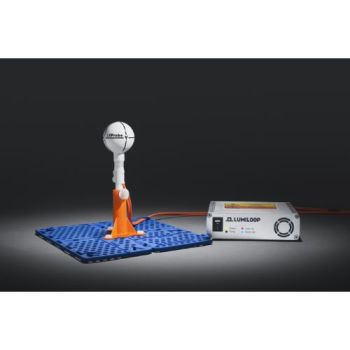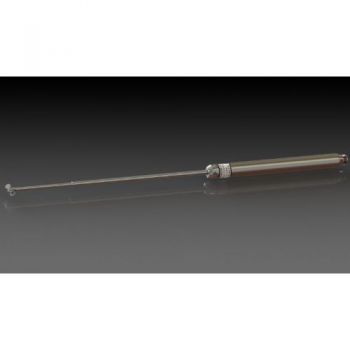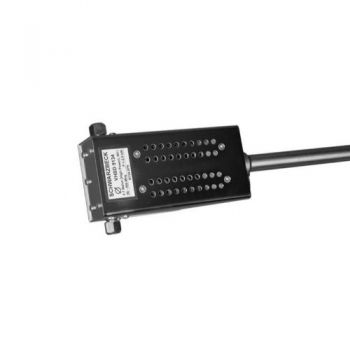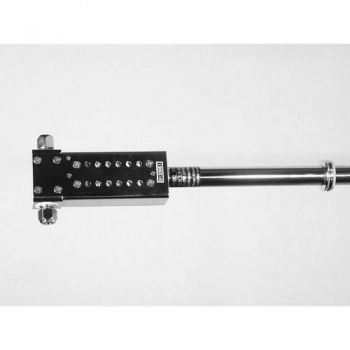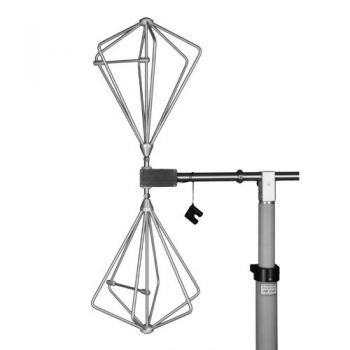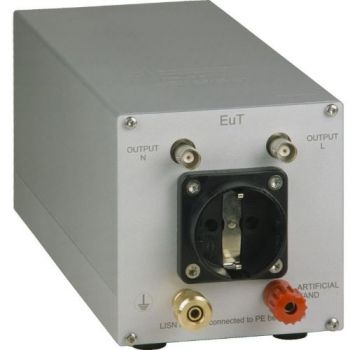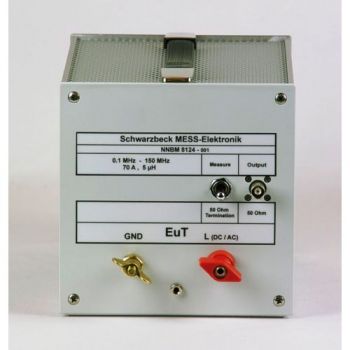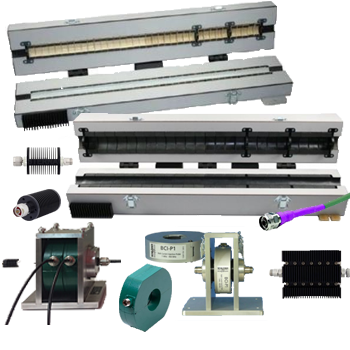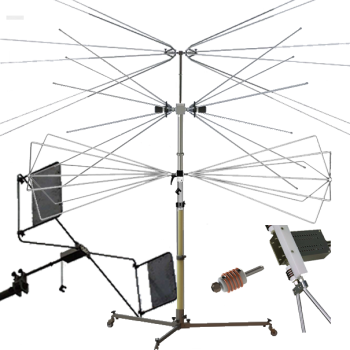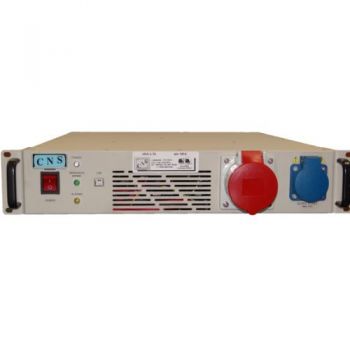Products
The LSProbe 1.2 Variant E Field Probe is a high-speed, high-accuracy, and high-dynamic range electric-Field probe.
- Its standard frequency range of 10 kHz – 8.2 GHz. 1,000 V/m
- Best-in-class compensation of linearity, frequency, and temperature guarantees accurate measurements from less than 0.1 to at least 1,000 V/m.
- A dynamic range of 100 dB is achieved for many frequencies, enabling Field measurements at more than 10,000 V/m.
- Customized high Field-strength „X“-variants, supporting up to 30,000 V/m and a damage level of 100,000 V/m, are available upon request.
- Small biconical microwave antenna
- (1) 3 - 18 GHz
- Compliant with CISPR 16-1-4 for site validation above 1 GHz
- Including transport case
- 10 W
- VHBD 9134antenna holder/balun in combination with required elements:
- Biconical Elements: BBLA 9136
- Open-Cone Elements: BBFA 9146, FBAL 9178, BBAE 9179
- high power antenna holder/balun
- 50:200 Ohm
- 20-200 MHz, 2.5 kW, Type N (f) Optional: 7/16-female
- VHBD 9133 antenna holder/balun in combination with required elements:
- Biconical Elements: BBA 9106, BBLA 9136
- Open-Cone Elements: BBFA 9146, FBAB 9177FBAL 9178, BBAE 9179
- high power antenna holder/balun
- 50:200 Ohm
- 20-300 MHz, 1 kW, Type N (f)
- VHBB 9124 antenna holder/balun in combination with required elements:
- Biconical Elements: BBA 9106, BBLA 9136, BBAK 9137, BBVK 9138
- Open-Cone Elements: FBAB 9177, FBAL 9178, BBFA 9146
- Better antenna factor for lower frequency end
- 50:200 Ohm
- 20-600 MHz(dependent on elements), 10 W, Type N (f)
- Low cost 2 path LISN
- Line Impedance Stabilisation Network
- Connector: CEE 7/4
- 9 kHz to 30 MHz
- 250 VAC, 350 VDC, 10 A
- (50 µH+5 Ω) || 50 Ω
- CISPR 16-1-2
- Acc. to CISPR 25 Ed. 4, CISPR 16-1-2, DO 160, MIL-STD, or ISO 7637-2
- impedance (5µH + 1 Ohm) || 50 Ohm
- 70 A, 1000 V (DC)
- Switchable 50Ohm Load on measurement port
- 1 microfarad capacitor to ground on AE side
- BNC-jack (Type N option)
Absolute EMC offers an assortment of injection test kits for the use of conducted immunity. The kits can be used with many available conducted immunity systems, including the Schlöder CDG 7000, to make selection and setup easy. All calibration fixtures, injection clamps, attenuators, and termination resistors necessary for meeting the requirements of conducted immunity systems. All all-in-one systems are covered.
The Schwarzbeck line of biconical antennas is ideally suited for EMC testing. The interchangeable design can be paired easily with different elements for different applications. The kits offered here make the selection process simple and straight forward. Testing < 150 MHz and at 1 or 3 meters in the near field of each antenna becomes difficult to predict, especially in small chambers.
The use of these kits gives many antenna options in a single solution. With the alternative element options, the possibility of finding a better match to your chamber and requirements increases.
- Full compliant system meeting the requirements
- IEC 61000-3-2 Harmoinc Emissions
- IEC 61000-3-3 Flicker Emissions
- USB controlled, Windows 10 compatible software included
- Singel and 3 phase 16 Amp, 120 and 230 Voltages, 50/60Hz

